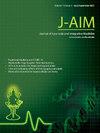Translating Ayurvedic concepts to modern drug structures: A novel paradigm
IF 1.9
Q3 INTEGRATIVE & COMPLEMENTARY MEDICINE
引用次数: 0
Abstract
Modern pharmacology faces challenges in fully explaining inter-individual variability in drug efficacy and side effects. This article introduces a groundbreaking approach that applies Ayurvedic principles to interpret modern drug structures and actions, offering a more comprehensive framework for understanding drug behavior. Through the Collaborative Medicine and Science (Co.M.S.) framework, we demonstrate how Ayurvedic epistemology provides a holistic reading of modern pharmaceuticals using fundamental principles of Panchamahabhuta, Tridosha, and Guna. This Ayurvedic interpretation reveals how drug effects (Karma) emerge from the interaction between a substance's inherent qualities (Guna profile) and an individual's constitutional context (Prakriti/Vikriti), explaining inter-individual variability in drug responses. Illustrative examples using antibiotics and antihypertensives demonstrate how this approach can optimize prescription practices, reduce side effects, and lower healthcare costs. While empirical validation will strengthen this approach, it already offers valuable practical insights that complement—not replace—conventional pharmacology, potentially enhancing personalized medicine and patient outcomes.
翻译阿育吠陀概念到现代药物结构:一个新的范例。
现代药理学在充分解释药物疗效和副作用的个体差异方面面临挑战。本文介绍了一种开创性的方法,应用阿育吠陀原理来解释现代药物的结构和作用,为理解药物行为提供了一个更全面的框架。通过合作医学与科学(co . m.s.)框架,我们展示了阿育吠陀认识论如何使用Panchamahabhuta, Tridosha和Guna的基本原则提供了对现代药物的整体解读。这种阿育吠陀的解释揭示了药物效应(Karma)是如何从物质的内在品质(Guna profile)和个体的体质环境(Prakriti/Vikriti)之间的相互作用中产生的,解释了药物反应的个体差异。使用抗生素和抗高血压药物的说明性例子说明了这种方法如何优化处方实践、减少副作用和降低医疗保健成本。虽然经验验证将加强这种方法,但它已经提供了有价值的实用见解,可以补充而不是取代传统药理学,潜在地提高个性化医疗和患者的治疗效果。
本文章由计算机程序翻译,如有差异,请以英文原文为准。
求助全文
约1分钟内获得全文
求助全文
来源期刊

Journal of Ayurveda and Integrative Medicine
INTEGRATIVE & COMPLEMENTARY MEDICINE-
CiteScore
4.70
自引率
12.50%
发文量
136
审稿时长
30 weeks
 求助内容:
求助内容: 应助结果提醒方式:
应助结果提醒方式:


